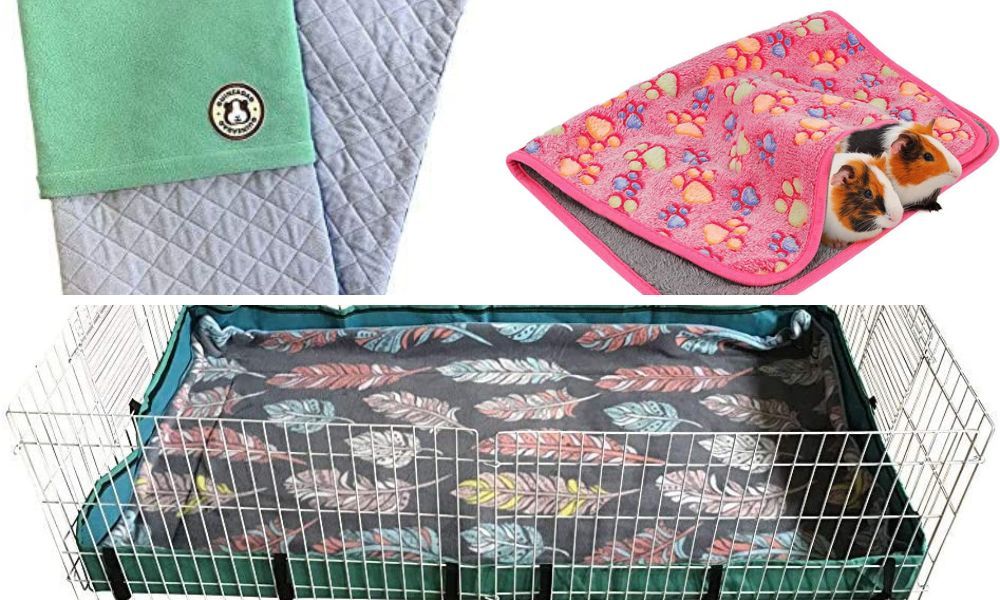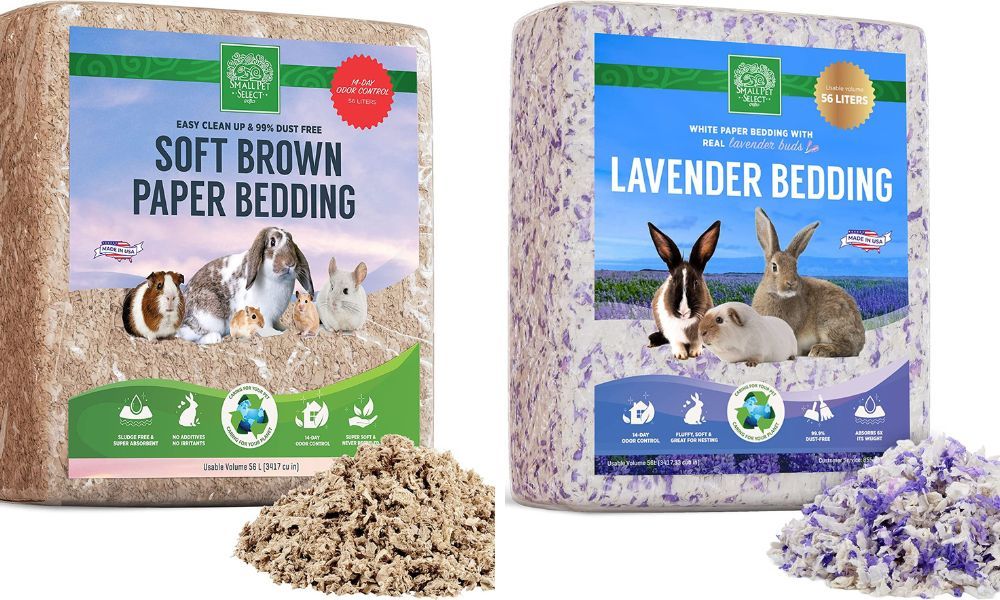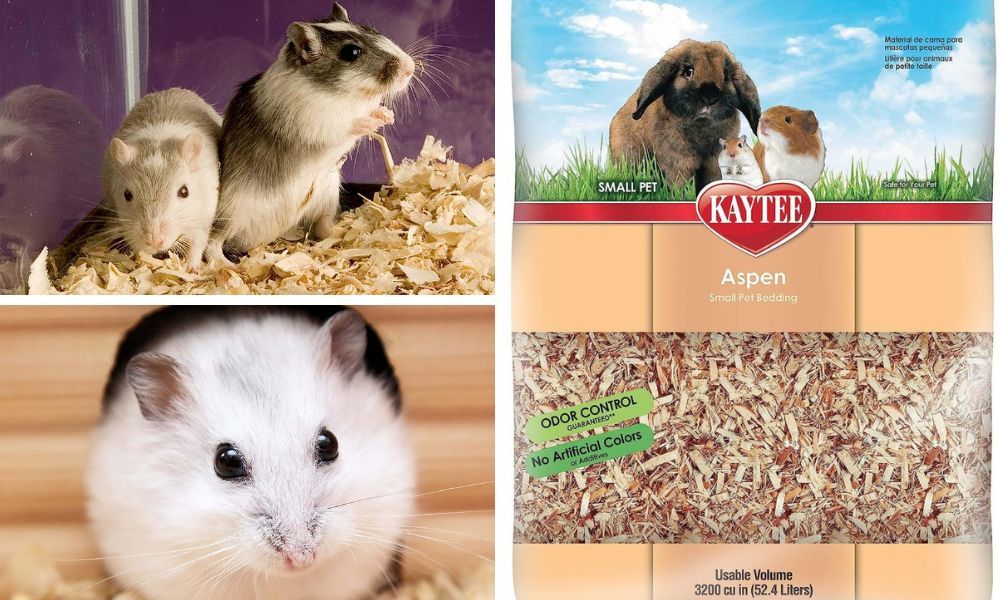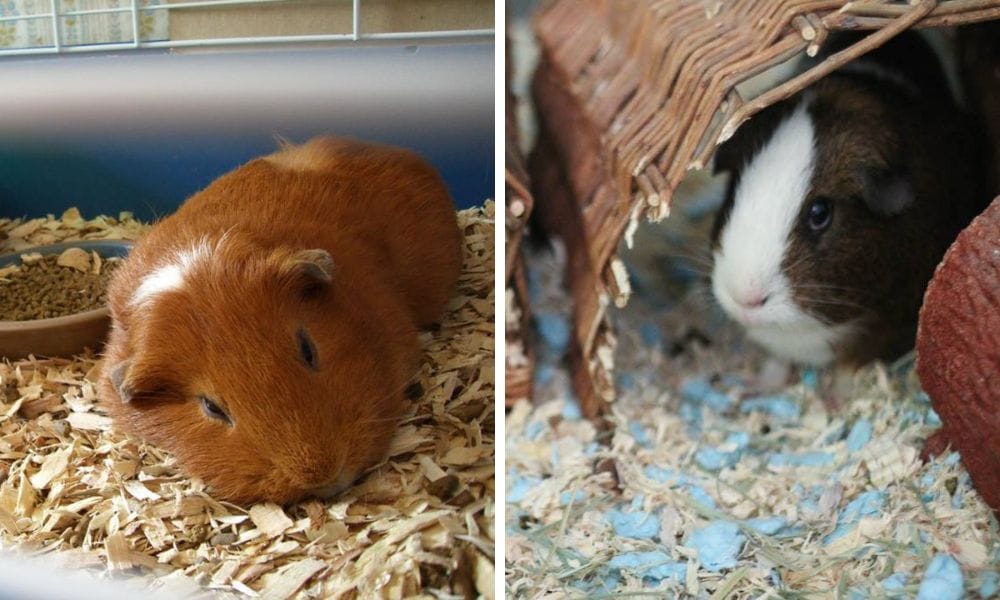Guinea Pig Bedding: Top 3 Options to Go For
Are you looking for the best guinea pig bedding that won't make you break the bank? Then this blog is for you! We're here to show you the top 3 options that will keep your guinea pigs living in luxury without making it an expensive endeavor.

Guinea pigs are not just pets; they're a part of the family. As a responsible guinea pig parent, you want to ensure that your furry friend has a comfortable and safe habitat. One of the most crucial aspects of guinea pig care is choosing the right bedding. With so many options available, it can be overwhelming to decide which one is the best for your guinea pig's enclosure. In this comprehensive listicle, we'll explore the top three bedding options for guinea pigs, helping you make an informed decision for your small pet's comfort and health.
Key Takeaways:
- Understand the Importance of Choosing the Right Bedding: The right bedding is essential for your guinea pig's health, providing comfort and aiding in odor control and waste management.
- Discover the Top Bedding Options: Learn about the three best bedding options for guinea pigs, including their benefits and how to use them effectively.
- Know When to Change Bedding: Gain insights on how often to change guinea pig bedding to maintain a clean and healthy environment for your pet.
The Significance of Proper Bedding for Guinea Pigs
When it comes to guinea pig care, selecting the appropriate bedding material is not just about comfort; it's about health. The right bedding can prevent respiratory problems, control odors, and absorb moisture, which is crucial in preventing the growth of harmful bacteria. Many guinea pig owners have found that the right bedding can significantly enhance their pets' quality of life.
Bedding Types: A Quick Overview
Before diving into the top three options, it's important to understand the variety of bedding types available. From natural paper bedding to fleece liners, each type has its own set of pros and cons. The goal is to find a bedding that is absorbent, dust-free, and free from harmful aromatic oils that can cause respiratory issues in small animals.
Option 1: Fleece Cage Liners
The Comfort of Fleece Liners
Fleece cage liners are a popular choice among many guinea pig owners due to their super soft texture and reusability. These liners are designed to wick away moisture from the surface, keeping your guinea pigs dry and comfortable. They are also environmentally friendly and cost-effective in the long run, as they can be washed and reused multiple times.

Maintenance and Care for Fleece Liners
To maintain fleece liners, it's essential to spot clean daily and wash them regularly in a laundry bag to remove hair and debris. Pairing fleece liners with absorbent layers such as puppy pads or towels underneath can enhance their effectiveness in moisture control.
Option 2: Paper-Based Bedding
The Benefits of Natural Paper Bedding
Natural paper bedding is another excellent choice for guinea pigs. It's typically dust extracted, which is vital for protecting your guinea pig's respiratory system. Paper bedding is super absorbent, often made from recycled materials, and can be found in dust-free varieties to ensure a clean and safe environment for your small pets.
Using Paper Bedding Effectively
When using paper bedding, it's crucial to choose a good quality product that absorbs moisture well and doesn't contain any inks or chemicals. Change guinea pig bedding regularly to prevent bacterial growth and keep the cage smelling fresh. Paper bedding is also easy to compost, making it an eco-friendly option.

The Allure of Hay as Guinea Pig Bedding
Hay isn't just for eating—many guinea pig owners are discovering the dual-purpose benefits of using hay as bedding. Not only does it provide a natural and comfortable environment that guinea pigs love, but it also satisfies their need to forage and chew. When considering good guinea pig bedding, hay is often at the top of the list because it's a material that these little critters are instinctively drawn to. However, it's important to ensure that the hay is clean and dry to prevent any health issues related to mold or excess moisture.
While hay can be a cost-effective option, especially if you're already purchasing it for their dietary needs, it does require frequent changes to maintain a hygienic habitat. The key is to use a layer of hay over another more absorbent form of guinea pig bedding, such as paper-based products or a fleece liner. This combination allows for the comfort and natural appeal of hay while ensuring that the guinea pig enclosure remains dry and odor-free. Remember, the best bedding for guinea pigs is one that caters to their physical and behavioral needs.
Exploring Eco-Friendly Bedding Alternatives
When it comes to guinea pigs bedding, the shift towards eco-friendly options is not just a trend but a responsibility. Many guinea pig owners are now exploring bedding materials that are both comfortable for their pets and kind to the planet. One such option is using recycled paper products that are processed to be dust free and super absorbent. These products often come in pellet form and can be a cost-effective solution, reducing the carbon dioxide footprint associated with pet care.
Moreover, some innovative companies are producing biodegradable bedding made from plant-based fibers. These materials are not only soft and cozy for older guinea pigs but also break down naturally in the environment. This type of bedding is usually free from the harmful aromatic oils found in cedar wood shavings and kiln dried pine shavings, making it a safer choice for your furry friends. As a bonus, these eco-friendly beddings often come in full-page-sized sheets that can be easily placed in the cage and replaced, simplifying maintenance for pet owners.
The Debate Over Using Cat Litter for Guinea Pigs
The use of cat litter as bedding for guinea pigs is a topic of much debate. While it may seem like a convenient and cost-effective option, it's essential to understand the potential risks involved. Traditional cat litter, especially the clumping kind, is not suitable for guinea pigs as it can cause serious health issues if ingested. It's also typically dusty, which can lead to respiratory problems for these sensitive creatures.
However, there are some cat litter products made from recycled paper or wood pulp that are marketed as safe for small animals. These are usually dust free and can be a viable option for guinea pig bedding if chosen carefully. It's crucial to ensure that the product is non-clumping and free from additives or fragrances that could harm your guinea pigs. Always consult with a veterinarian before making a switch to this type of bedding to ensure the health and well-being of your pets.
The Evolution of Guinea Pig Fleece Bedding
Guinea pig fleece bedding is revolutionizing the way pet owners approach their furry friends' living spaces. This modern twist on guinea pig s bedding offers a reusable, eco-friendly alternative that's gaining popularity among the community. Fleece liners are designed to wick away moisture from the surface, keeping your guinea pigs dry and comfortable. They come in a variety of colors and patterns, allowing pet owners to customize their guinea pig enclosure with a personal touch.
The initial investment in guinea pig fleece bedding might be higher than traditional options, but the long-term savings are undeniable. Fleece liners are washable and can last for years, making them a cost-effective and sustainable choice. Plus, they're dust-free, which is crucial for maintaining respiratory health in guinea pigs. When transitioning to fleece, it's essential to provide an area with guinea pig litter, such as kiln-dried pine shavings or paper-based products, to manage waste effectively. With proper care, fleece bedding can provide a cozy and clean environment for two guinea pigs or even a larger group.
Option 3: Aspen Bedding
The Natural Choice: Aspen Bedding
Aspen bedding is a natural wood shaving option that is safe for guinea pigs. Unlike cedar and pine bedding, which contain harmful aromatic oils, aspen bedding is free from these chemicals and is non-toxic to small animals. It provides a comfortable and absorbent layer for guinea pigs to burrow and nest in.
Tips for Using Aspen Bedding
When opting for aspen bedding, ensure that you're using kiln-dried pine shavings to minimize dust and maximize absorbency. It's also important to change the bedding regularly to prevent the buildup of ammonia from urine, which can cause respiratory problems and unpleasant odors.

Understanding the Risks of Cedar and Pine Bedding
Cedar and pine bedding have been traditionally used for small pets, but they are now known to pose health risks. The aromatic oils present in these woods can cause respiratory issues and liver damage in guinea pigs. It's best to avoid these types of bedding and opt for safer alternatives.
The Importance of Dust-Free Bedding
Dusty bedding can lead to respiratory problems in guinea pigs. Their delicate respiratory systems are sensitive to airborne particles, so it's crucial to choose a dust-free or dust-extracted bedding option to minimize the risk of respiratory issues.
How Often to Change Guinea Pig Bedding
Regular cage cleaning is a vital part of guinea pig care. Depending on the bedding type and the number of guinea pigs you have, you may need to change the bedding completely every 3-7 days. However, spot cleaning should be done daily to remove dirty toys, uneaten food, and soiled bedding.
The Role of Bedding in Odor Control
A good quality, absorbent bedding not only keeps your guinea pigs comfortable but also helps in controlling odors. Bedding that effectively absorbs moisture and urine will reduce the smell and maintain a fresher cage environment.

Considering Cage Size and Bedding Amount
The size of your guinea pig cage will determine how much bedding you'll need. A larger enclosure requires more bedding to ensure that the entire floor is covered with a thick enough layer to absorb moisture and provide comfort.
Bedding and Guinea Pig Health Issues
Choosing the right bedding is not just about comfort; it's about preventing health issues. Inappropriate bedding can lead to foot sores, respiratory problems, and even contribute to the development of conditions like bumblefoot. Always select a bedding that is safe and comfortable for your guinea pigs.
The Convenience of Bedding for Guinea Pig Owners
While the primary concern is the well-being of your guinea pigs, the convenience of bedding for owners is also a factor. Options like fleece liners and paper bedding can make cage cleaning easier and more efficient, saving time and effort.
Cost-Effectiveness of Bedding Choices
Cost is an important consideration when choosing bedding. While some options may seem more expensive upfront, their durability and reusability, like fleece cage liners, can make them more cost-effective in the long run compared to disposable bedding.
Summary
In summary, the top three bedding options for guinea pigs are fleece cage liners, natural paper bedding, and aspen bedding. Each option offers unique benefits, such as comfort, absorbency, and ease of maintenance. It's crucial to avoid cedar and pine bedding due to their harmful aromatic oils and to opt for dust-free or dust-extracted bedding to protect your guinea pig's respiratory health. Regularly changing the bedding and spot cleaning are essential practices to keep your guinea pig's enclosure clean and odor-free. When selecting bedding, consider factors like cage size, health issues, convenience, and cost-effectiveness to find the best fit for you and your furry friends.
FAQ Section
Q: How often should I change my guinea pig's bedding? A: You should change the entire bedding every 3-7 days, depending on the type of bedding and the number of guinea pigs. However, spot clean daily to remove soiled areas and maintain cleanliness.
Q: Can I use cedar or pine bedding for my guinea pigs? A: It is not recommended to use cedar or pine bedding for guinea pigs due to the presence of harmful aromatic oils that can cause respiratory problems and liver damage. Opt for safer alternatives like aspen bedding.
Q: Are fleece liners a good bedding option for guinea pigs? A: Yes, fleece liners are a great option for guinea pigs. They are soft, comfortable, reusable, and environmentally friendly. Just make sure to use an absorbent layer underneath and clean them regularly.

